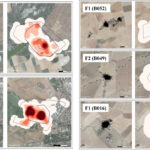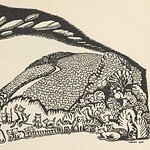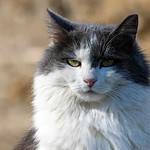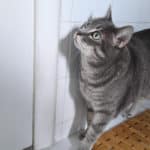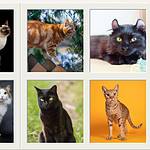Cats are highly adapted hunting machines. Nearly every part of their body serves to improve their ability to hunt for their food, from their sensitive whiskers to their razor-sharp claws and teeth, to their digestive system.
As humans, we often hear about the importance of eating a balanced diet of protein, fruits, and vegetables. But the same really can’t be said for cats. Instead, cats are obligate carnivores, meaning that it is a biological necessity for meat to make up a major portion of their diets.
Cats are obligate carnivores
It is suggested that a cat’s food should have a protein content 30% for growing and reproducing cats and 27% for adult cats, and the carbohydrate content should be less than 10%. In fact, cats need about 2-3 times more protein than dogs need.
Hypercarnivore cats
In fact, cats along with minks are considered hypercarnivores. [1] This means that the protein needs of cats and minks are higher than any other domestic animals.
Why cats need a high protein diet
Meat contains incredibly important factors like taurine and arginine. Both taurine and arginine are only found in animal flesh. Cats can’t make taurine from other amino acids, unlike most other mammals. Not enough taurine in a cat’s diet can result in retinal degeneration, infertility, and dilated cardiomyopathy. [2]
In black cats, a lack of tyrosine will turn the cat’s fur red. Tyrosine is an amino acid that plays a critical role in the production of melanin in cats. It is produced in the body from another amino acid known as phenylalanine. Since phenylalanine is an essential amino acid, it cannot be synthesized within the body and must be obtained through dietary intake.
Common sources of phenylalanine in the feline diet include protein-rich foods such as meat, fish, eggs, and dairy products, all of which are frequently found in cat food. Most commercial cat food formulations are carefully crafted to ensure a balanced provision of essential amino acids, including phenylalanine. This helps meet the nutritional requirements of cats, ensuring that they receive the necessary components to produce tyrosine, and subsequently, melanin.
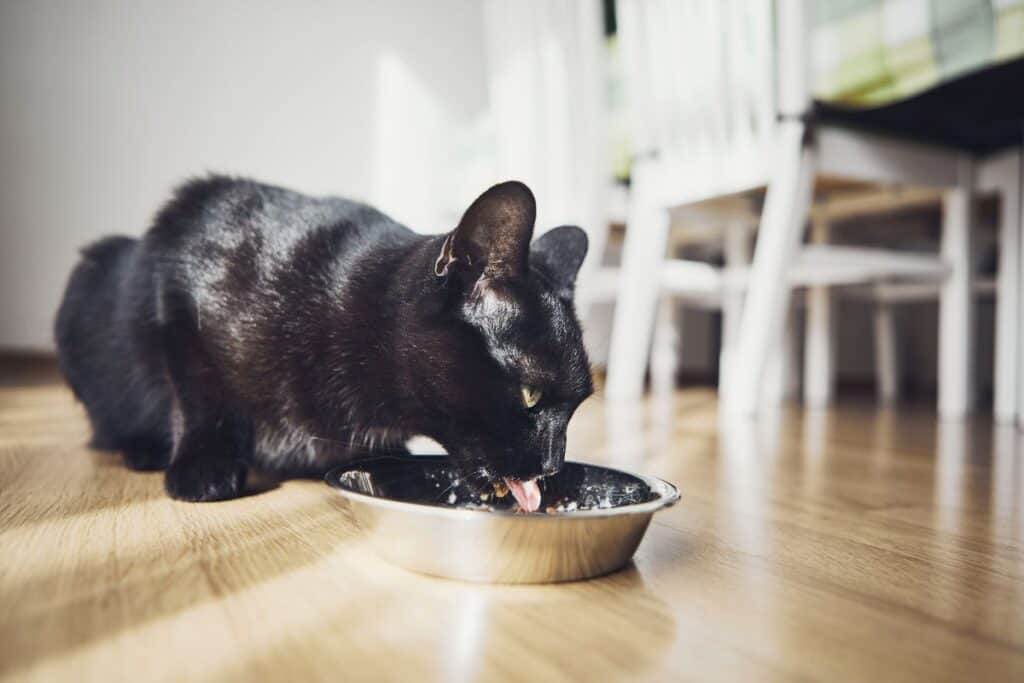
Cats also lack the ability to make their own arginine, an amino acid in animal protein. Arginine is responsible for helping to remove excess ammonia from the body. A cat with an arginine deficiency could experience some unpleasant symptoms leading to neurological impairment and even death.
Humans and even dogs can make vitamin A from beta-carotene. However, cats need to obtain vitamin A in its pre-formed state. Cats are also able to meet their blood glucose requirements from gluconeogenesis using protein, whereas humans meet it through the breakdown of carbohydrates.
Taurine, arachidonic acid, vitamin A, and vitamin B12 can’t be obtained in sufficient amounts from plants. Without these key ingredients that cats get from meat, they can suffer from heart and liver problems as well as hearing loss and a slew of other health problems.
Cats have a short gastrointestinal tract
Cats have the shortest gastrointestinal tract comparable to their body size than any other mammal.
Animals with longer gastrointestinal tracts are better suited to digestive carbohydrates and plant matter as they have the length needed and the digestive bacteria within their systems to properly break down plant matter.
Since raw meat is quite simple to digest and easier to break down than carbohydrates, cats don’t have a need for a longer gastrointestinal tract.
Conclusion
Most people wouldn’t expect to see an eagle or a hawk stealing an ear of corn from a field and eating that, right? In much the same way, cats simply can’t be expected to eat foods they aren’t biologically able to digest.
However, it is important to note that not all cat food is good food. Some cat foods out there contain less than ideal filler ingredients and don’t focus on the nutrients essential to cats’ well-being.
When considering what to feed your cats, one thing to look for is a statement on the can or bag stating that the food is formulated to comply with the Association of American Feed Control Officials nutrition profiles and guidelines.
References
[1] Eisert, R. (2011). Hypercarnivory and the brain: protein requirements of cats reconsidered. Journal of Comparative Physiology B, 181(1), 1-17. https://doi.org/10.1007/s00360-010-0528-0
and
Verbrugghe, A., & Hesta, M. (2017). Cats and carbohydrates: the carnivore fantasy?. Veterinary sciences, 4(4), 55. https://doi.org/10.3390/vetsci4040055
[2] Zaghini, G., & Biagi, G. (2005). Nutritional peculiarities and diet palatability in the cat. Veterinary research communications, 29(2), 39-44. https://doi.org/10.1007/s11259-005-0009-1

